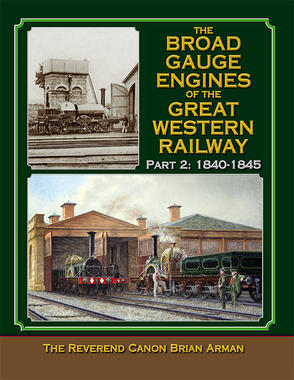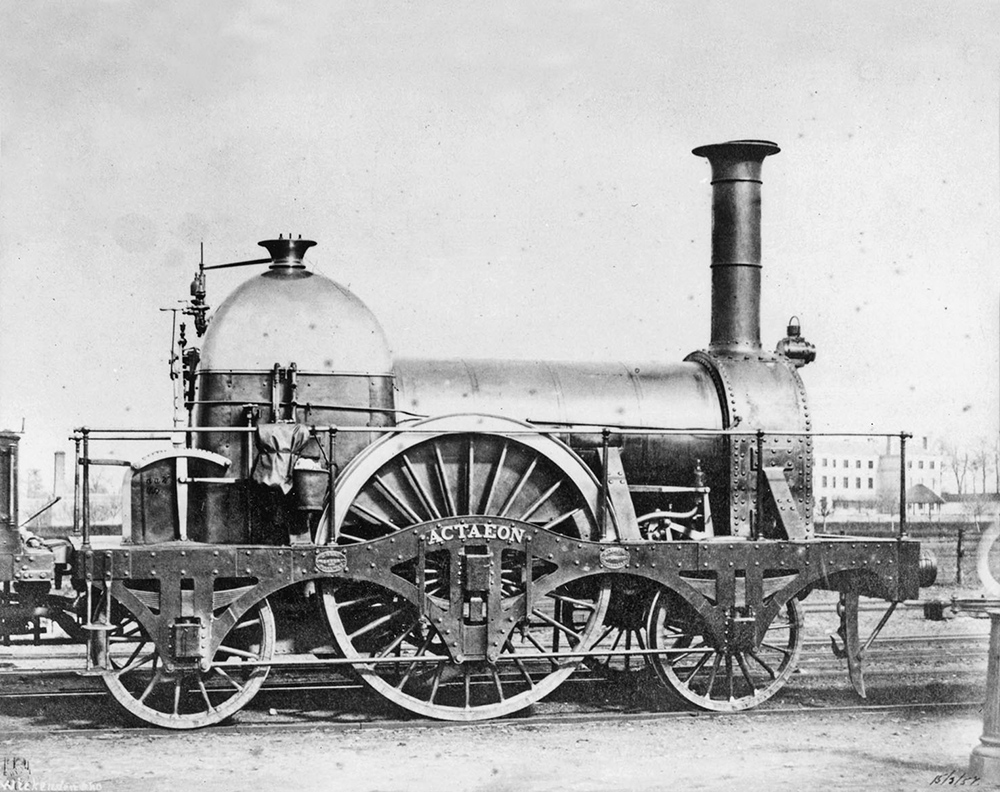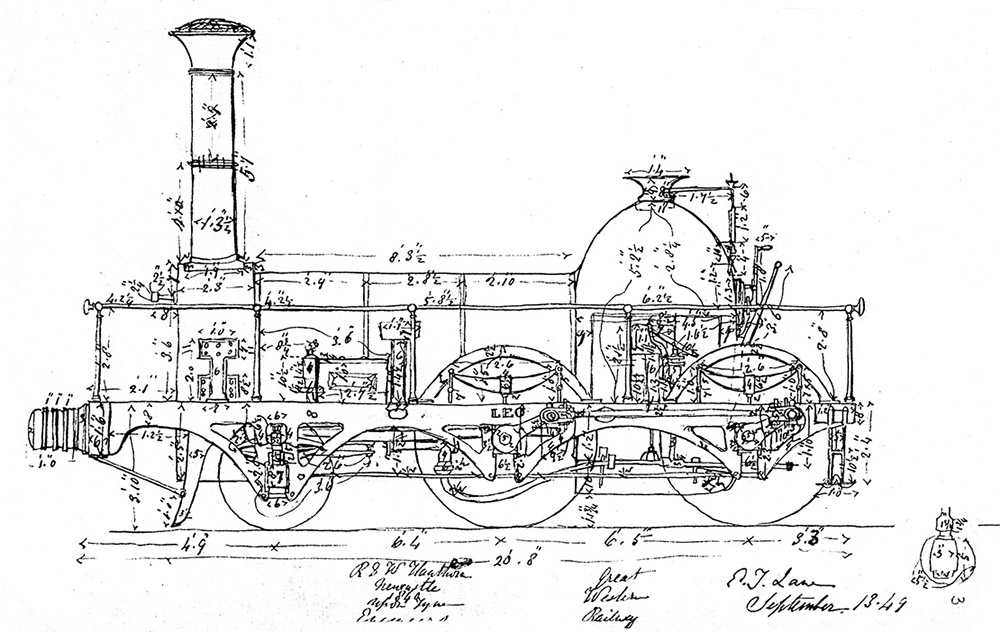Broad Gauge Engines of the Great Western Railway: Part 2 : 1840-1845

Broad Gauge Engines of the Great Western Railway: Part 2 : 1840-1845
The Reverend Canon Brian Arman
144 pages. 275x215mm. Printed on gloss art paper, hard bound with laminated board covers.
ISBN13 : 9781911038764
£22.50
The Reverend Canon Brian Arman
144 pages. 275x215mm. Printed on gloss art paper, hard bound with laminated board covers.
ISBN13 : 9781911038764
£22.50
In its first years of operation between 1838 and 1840, the Great Western Railway gained a deserved reputation for unreliability among the travelling public. Matters became so difficult that the railway was forced to suspend time-tabled operation in 1839, running trains only when sufficient locomotives and rolling stock were available. From this low point and following the introduction of a series of new, improved engines from the spring of 1840, the GWR progressed from being one of the railway’s ‘black sheep’ to a status of near preeminence by the mid 1840s. This achievement resulted from the meticulous design work undertaken by the GWR’s Locomotive Superintendent Daniel Gooch, always with the support and encouragement of Isambard Brunel and working with a dedicated team of draughtsmen and assistant engineers. The four classes of engines which were built between 1840 and 1842 set new standards of manufacturing standardisation and performance, which at the time and for some years to come were unequalled not only in Great Britain but in Continental Europe and the USA. Gooch’s genius was not confined to locomotive design; he was among the very first group of railway engineers to recognise the need for standardisation of parts and the manufacture of components. To this end he adopted Joseph Whitworth’s newly laid down standards for screw threads, taps and dies, etc, and was in the vanguard of those who recognised the need to adopt such practises in the wider engineering world. The story that unfolds in this second part of the story of the broad gauge motive power of the GWR, is thus an account of four groups of engines – the ‘Fire Fly’, ‘Sun’, ‘Leo’ and ‘Hercules’ classes – which achieved new levels of performance and reliability that had previously been unattainable, not only on the GWR but on any other railway in the kingdom. Once again the narrative is illustrated with a plethora of plans and drawings, along with an impressive number of early photographs, which all serve to bring these wonderful machines back to life.


Broad Gauge Engines of the Great Western Railway: Part 2 : 1840-1845 - Sample Images

It is rare to have a photograph from this period so accurately dated as this. Taken on 15th March 1857, Actaeon is seen at the west end of Gloucester GWR station, which adjoined the Midland station at this date, close to where her boiler had blown up just two years earlier. The photograph graphically illustrates the strengthening plates on the frames on either side of the driving wheel, where repairs to and replacement of the original frames have been made and the new driving and carrying wheel, which differ in design to the leading wheel. With their much thicker tyres, they were substituted for the original design that had been destroyed in the explosion. At the very least a new boiler barrel (clad in sheet iron) will have been required – presumably spare boilers, fireboxes, etc, were on hand at Swindon. For further details see page 55 and compare this photograph with that of Centaur on page 57 and the drawing of the damaged Actaeon on page 84, which vividly illustrates the destruction of the frames, crank axle, etc, but suggests that the smokebox and perhaps firebox were recoverable. The plate behind the driving wheel simply read ‘Great Western Railway’ and is dated 1842, whilst the leading one is Nasmyths’ builders’ plate. The building in the right background is the new Gloucester Infirmary, completed in 1852, which replaced the original poor law union hospital that was demolished to make way for the South Wales Railway. Paul Garnsworthy has also identified the photographer (the initials ‘A.A.W 1857’ are visible on the windshield just to the left of the reversing lever, along with the inscription ‘Wickenden ?ho’ in the bottom left corner) as Alfred Authorn Wickenden who, according to the 1851 census, resided at 7 London Street, Swindon and, aged 20, is described as a ‘railway civil engineer’. At this time he was working for the GWR, probably in a junior capacity but, by 1861, he had returned to his native Rochester, where he continued to practise as a consulting engineer for the next forty years.

Lane’s very detailed sketch of Leo was made on Thursday 13th September 1849, presumably while it was in Swindon Works yard awaiting rebuilding. Though it is difficult to read all the dimensions, sufficient are visible to allow a detailed appreciation of the size of individual components to be made. The dates on these drawings are important as we shall shortly see – can we assume that work to convert Leo to a saddle tank began perhaps the next day, Friday 14th September?
